Discover Polynesian Voyaging on Hokulea Canoe
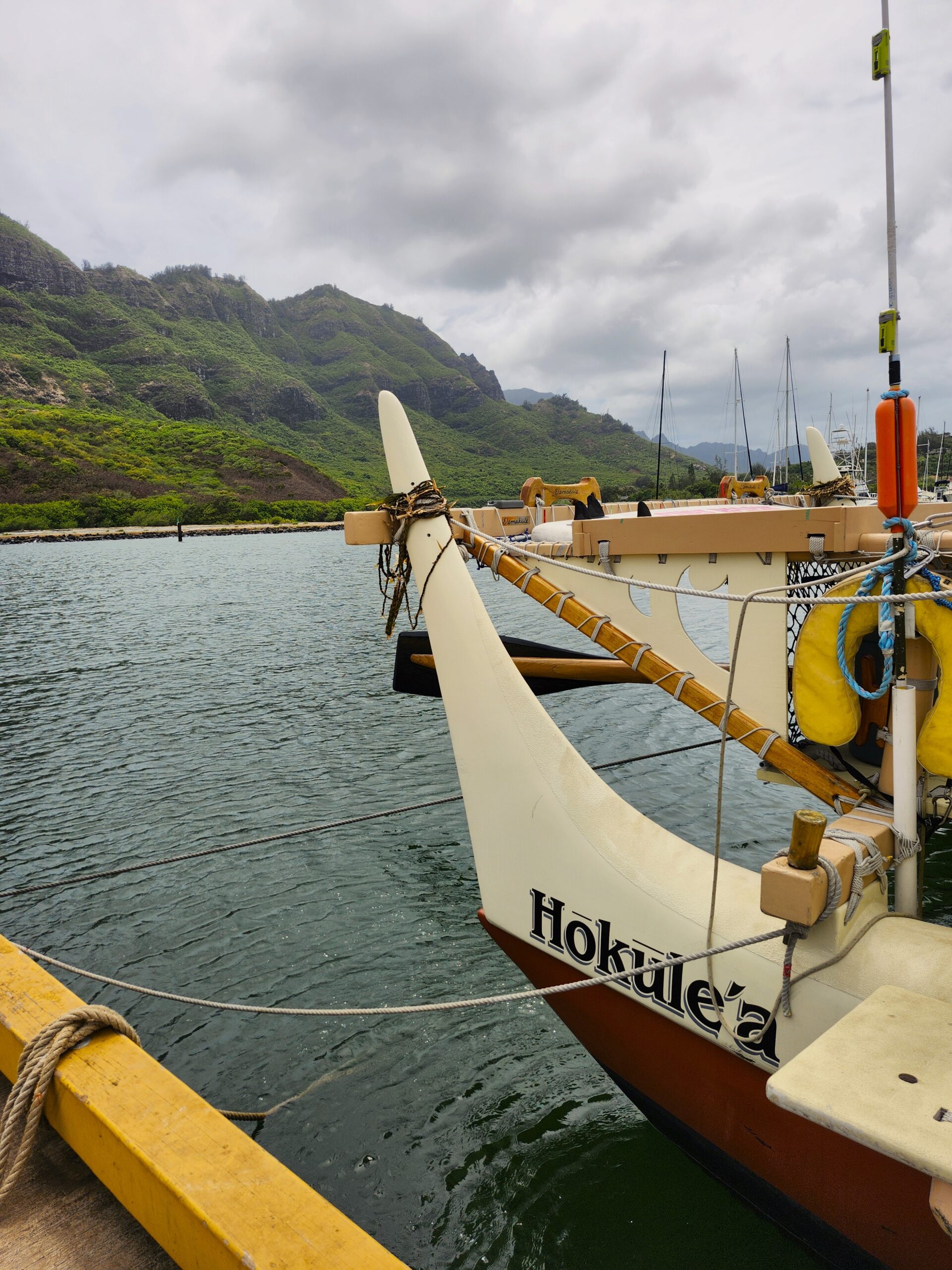
Sometimes, things fall into your lap serendipitously. That was the case when I learned that the Hokulea Canoe toured our island. I knew that my family had to get to the harbor to see the wayfaring vessel that circumnavigated the globe. What I did not know was how profoundly engaging and moving a short tour of the canoe would have on my soul.
There are times when travel blogging is visiting predetermined locations and writing about “perfect” itineraries. But, there are moments when the unexpected occurs. When you stumble upon something. You discover opportunities you never knew existed, or knew that you needed to see.
Our brief tour of the Hokulea Canoe was one of these special moments.
What is the Hokulea Canoe?
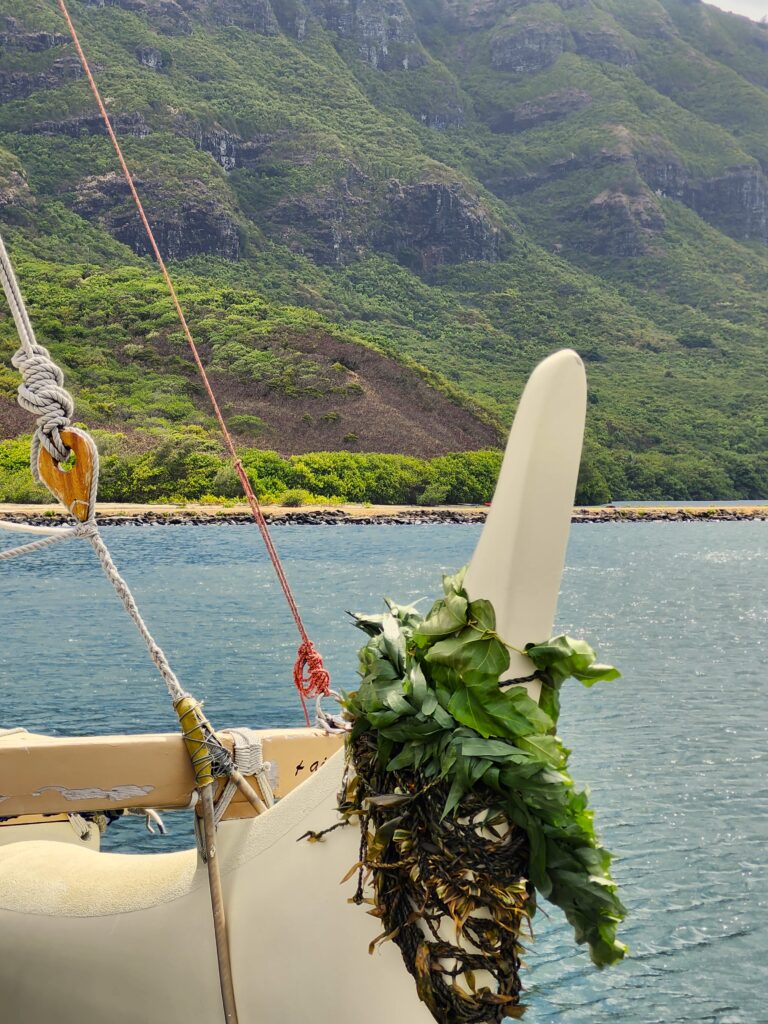
The canoe is a 61.5 foot long, 15.5 foot wide wood canoe. It is built in the style of other Polynesian wayfaring vessels.
Hokulea and its crew circumnavigated the globe on a three-year voyage from 2014-2017. However, before that time, the canoe journeyed many places around the globe, most often sailing throughout the Pacific Ocean.
The crew (12 to 16 persons) use the same navigating methods used by the ancient Polynesian peoples who first settled the islands of the South Pacific and Hawaii.
Why Build a Canoe?
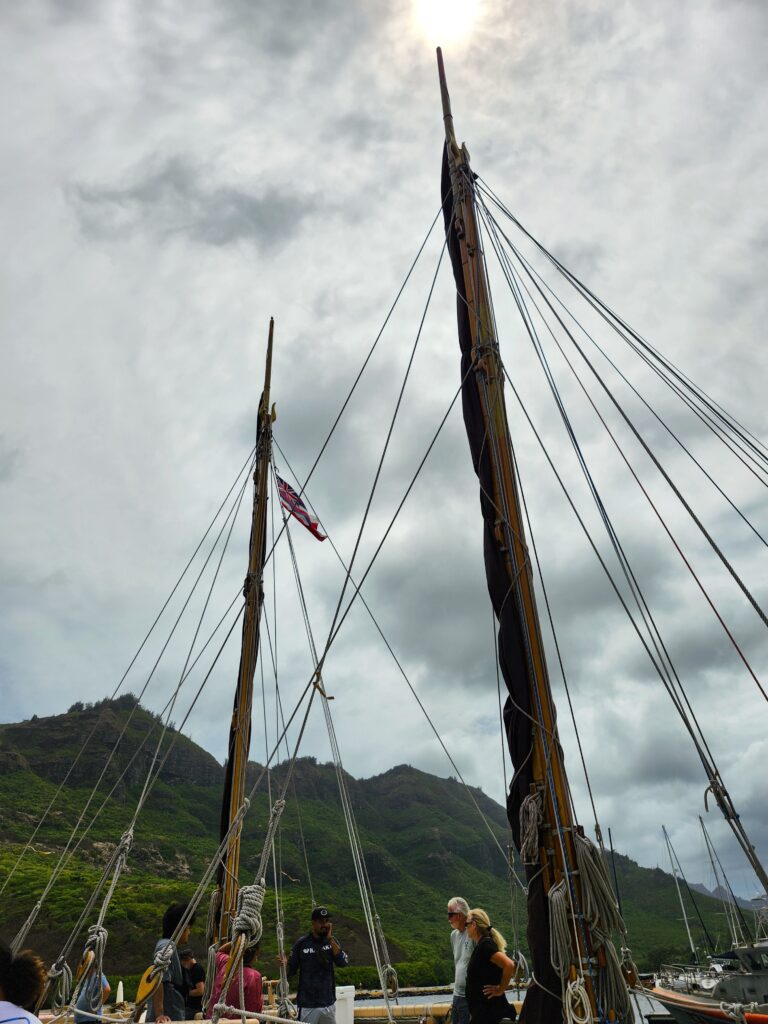
The canoe, constructed in the 1970s, took its maiden voyage in 1976.
But, why build a double-hulled voyaging canoe in the first place?
Part of that answer comes from historical discussions of the ancient Polynesian wayfarers. During the 1950s and 1960s, some scholars claimed that the ancient Polynesians probably found the islands of the South Pacific and Hawaii by happenstance. They claimed that those sailors simply ran into land by accident.
But this scholarly claim did not sit well with many. They knew that the journeys were not accidental. The structure of the vessels hinted at a more intentional voyage.
Captain Cook, landing in the Hawaiian islands in the 1770s, noted that the Hawaiian canoes journeyed into the wind. The European vessels were pushed from wind at the back of the boats. These navigational innovations were necessary for the Polynesian wayfarers who journeyed from West to East in the Pacific Ocean The Pacific winds since blows in the opposite direction. So the canoes needed to move against the wind.
Hokulea was built, in part, to prove that the Pacific wayfarers did not discover Hawaii by accident. It proved that the Polynesian navigators could use sailing vessels to travel long distances intending to discover new lands.
Construction of Hokulea

Once a decision to build Hokulea was made, the process of constructing and sailing began.
Ancient canoes were constructed with wood. Original plans for Hokulea involved building with Koa wood, a common Hawaiian wood. However, builders discovered Koa wood mostly lost due to deforestation on Oahu. That meant builders had to use plywood, fiberglass and resin. Efforts have since helped to restore Koa to the Hawaiian islands.
The crew navigate using two wood masts and sails and a long paddle.
Assembly of the canoe required extensive research to create a vessel most similar to those used by the ancient voyagers. The canoe construction used artwork found throughout the Pacific as well as records from journals (like Captain Cook’s) and others.
Finding a Navigator
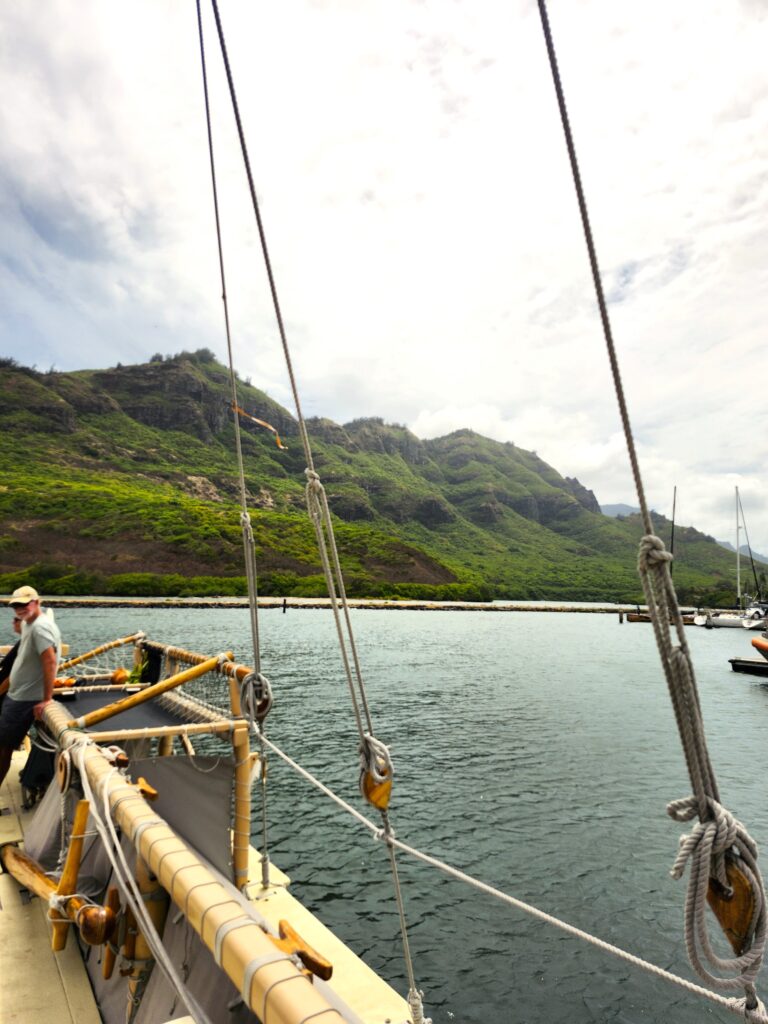
Once constructed, the Polynesian Voyaging Society needed a navigator for the maiden voyage.
This proved a most difficult challenge.
While much history passed through oral tradition, nobody in Hawaii knew how to sail the vessel using the ancient methods.
The voyage seemed a pipe dream, until a navigator on a small Micronesian island agreed to share his knowledge of non-instrument navigation. He was one of only six living persons with the the knowledge, but he was the only one of the six willing to share that knowledge. He lived on a small, flat island on which the tallest structure was a coconut tree.
But, this man agreed to teach the new wayfarers how to navigate using the traditional methods. These methods have now been passed to four generations of Hawaiians.
Voyaging
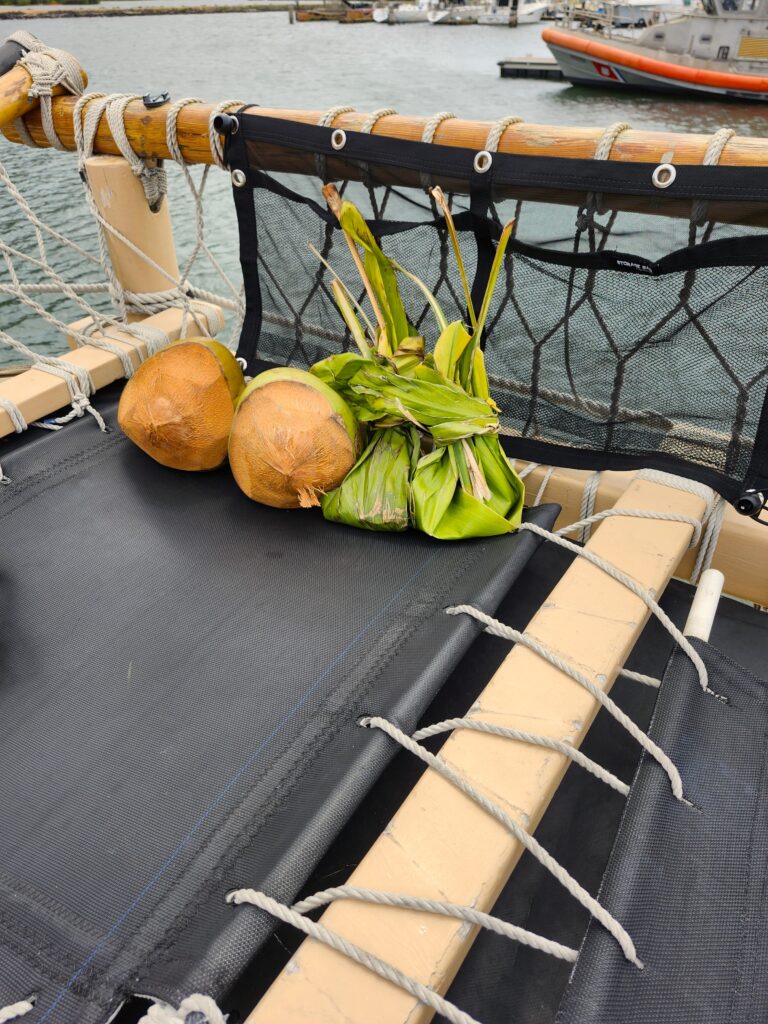
The inaugural voyage sent Hokulea from Hawaii to Tahiti in 1976. It has since journeyed all over the world, with recent stops in Alaska, Canada, California, and Hawaii. More South Pacific voyages are planned soon.
Twelve to sixteen crew members guide Hokulea without the use of electronic or modern navigational equipment. No watches or clocks are used. Navigators use the sun and stars to direct the voyage.
Hokulea means “star of gladness” in Hawaiian. The name refers to the zenith star, Arcturus, used as a guiding star for Hawaiian navigators. The star passes directly overhead at Hawaii’s latitude.
Permission to Board
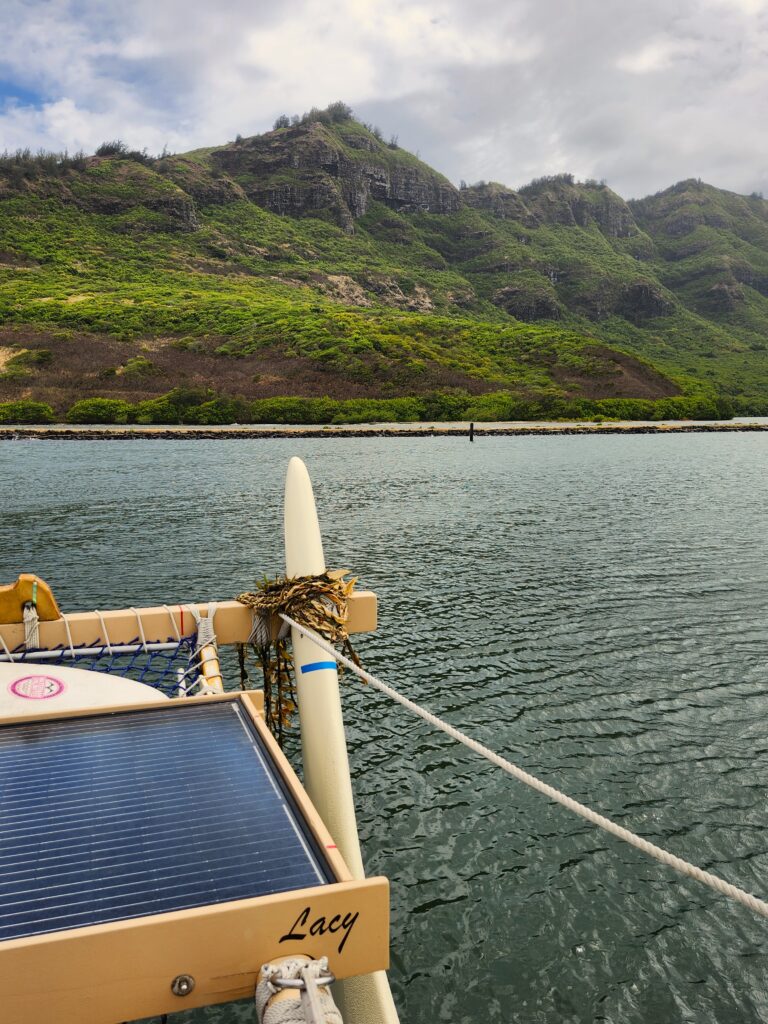
Obviously, Hokulea is a sailing vessel, and opportunities to board and see it are rare and special.
That’s why I was so excited to tour Hokulea. I knew it was possibly a once-in-a-lifetime chance.
While docked, the crew of Hokulea offers tours for students and the general public. We enjoyed getting to visit with crew members and learn about the history of Hokulea.
We also enjoyed learning about crew life. Crew members sign a contract. The contract does explicitly state that crew can be lost at sea.
Onboard, it is easy to see how. The canoe is small. It does not rise above the water more than a few feet.
There is no below deck or enclosed space. Crew sleep in small spaces on deck. Privacy comes from a drawn curtain.
Meals are prepared on deck. If you need to use a restroom, you tell a crew member, tether yourself to the vessel and squat over the ocean.
Journeys can take 21 to 30 days, and all supplies are kept on deck, including fresh water. The crew fish for food. Our guide told us they have caught 200 pound ahi. They throw back marlin because of the danger posed from that species.
Imagining the Past and Present
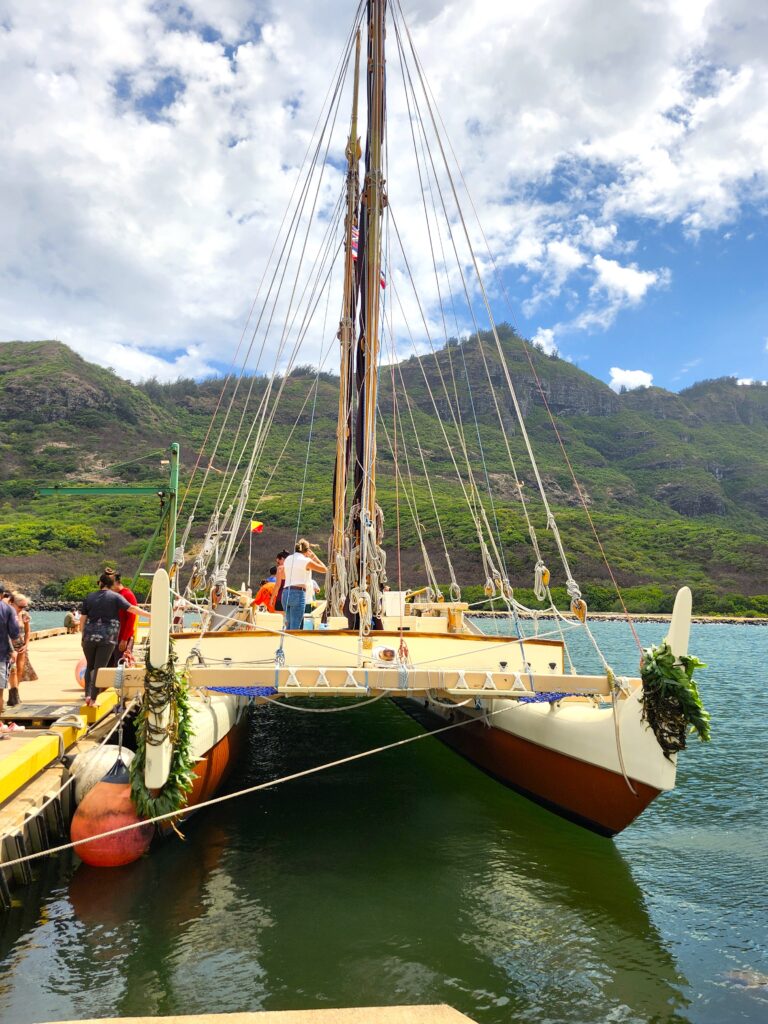
Onboard, during tours, you cannot help but think about those brave wayfarers of the past who journeyed into a vast unknown.
But, you also admire today’s crew, who in many ways, take the same brave journey.
Yes, the modern voyager has more knowledge of the global topography. But, they still bravely journey into an unknown ocean. And, unlike me, their knowledge lets them to know when a vast storm threatens. Sometimes knowing things is more frightening than being blissfully unaware.
Our Take
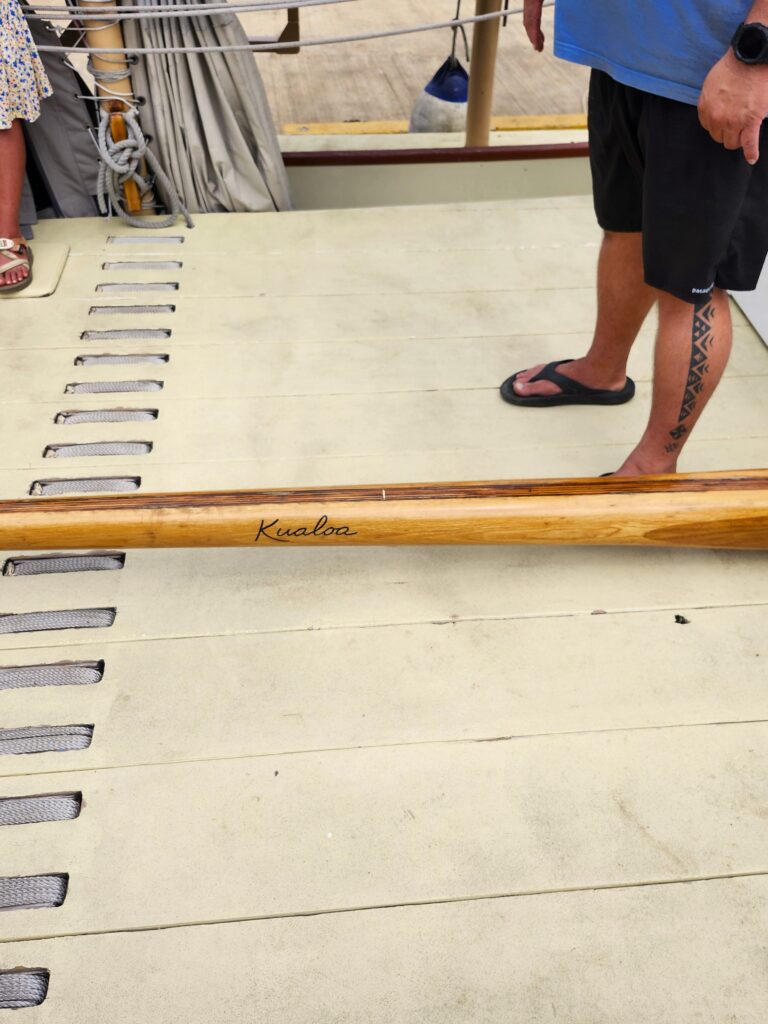
I left knowing that it takes a dedicated and special person to join the crew. They are preserving a tradition hundreds of years old. But, they also leave friends, family, and the comforts of life on land, to make a long and sometimes dangerous ocean trip. You cannot help but admire the crew.
When they dock, they allow school children to tour the vessel. As those children learn about Hokulea, the crew also hopes that some of those students will one day becomes a crew member of Hokulea. Some of the present crew took those same field trips which sparked a fire within them.
And that’s the beauty of Hokulea and its crew. They inspire. It moves the wayfaring soul found within many. It presents a living example of an historical past. Like its namesake, Hokulea canoe guides you toward a sense of well-being and gladness. The canoe stirs emotions one didn’t know existed. As you look at the past wayfaring tradition, you see a hope for the future.
If you get an opportunity to see Hokulea, drop everything and seize the chance to tour the phenomenal vessel.
You Might Also Enjoy:
Speaking of navigation, find out why you should teach kids map-reading skills.
See how other ancient cultures used the stars at the Mayan Ruins of San Gervasio.
Exploration comes in many forms. Check out Colorado’s Space Foundation Discovery Center.
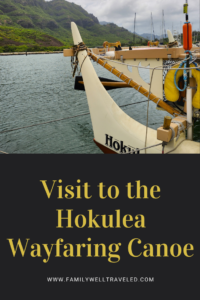
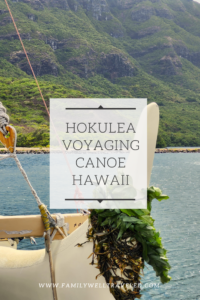
All photos and content are by Family Well Traveled and use of photos or content without permission will result in legal action.
